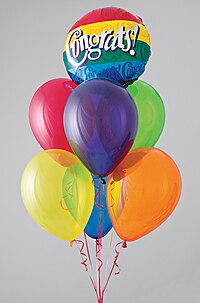
Correcting esophageal pressure measurements for patients undergoing mechanical ventilation
Sign Up to like & getrecommendations! Published in 2021 at "IFAC-PapersOnLine"
DOI: 10.1016/j.ifacol.2021.08.351
Abstract: Abstract During invasive mechanical ventilation, knowledge of the patient’s respiratory effort is valuable in guiding the clinical team to perform a personalized therapy. The same adjustment of the ventilator can produce excessive transpulmonary pressures for… read more here.
Keywords: mechanical ventilation; pleural pressure; pressure; esophageal pressure ... See more keywords

Overnight airway obstruction severity prediction centered on acoustic properties of smart phone: validation with esophageal pressure.
Sign Up to like & getrecommendations! Published in 2020 at "Physiological measurement"
DOI: 10.1088/1361-6579/abb75f
Abstract: OBJECTIVE Obstructive sleep apnea is characterized by a number of airway obstructions. Esophageal pressure manometry (EPM) based estimation of consecutive peak to trough differences (ΔPes) is the gold standard method to quantify the severity of… read more here.
Keywords: smart phone; esophageal pressure; severity; validation ... See more keywords

1134: ESOPHAGEAL PRESSURE-GUIDED MANAGEMENT WITH SEVERE ARDS AND INTRACTABLE INTRACRANIAL HYPERTENSION
Sign Up to like & getrecommendations! Published in 2020 at "Critical Care Medicine"
DOI: 10.1097/01.ccm.0000643472.30438.a4
Abstract: Introduction: We present a case of a young male who sustained a traumatic brain injury complicated by acute severe respiratory distress syndrome. The coexisting pulmonary pathology severely impacted intracranial pressure management. We present a novel… read more here.
Keywords: management; pressure guided; intracranial pressure; pressure management ... See more keywords

Exaggerated ventilatory drive estimates from epiglottic and esophageal pressure deflections in the presence of airway occlusion.
Sign Up to like & getrecommendations! Published in 2021 at "Journal of applied physiology"
DOI: 10.1152/japplphysiol.00896.2020
Abstract: Esophageal and epiglottic pressure deflections are widely used to quantify ventilatory effort during sleep and the arousal threshold in patients with obstructive sleep apnea (OSA). However, changes in upper airway patency will fundamentally alter pressure… read more here.
Keywords: pressure deflections; esophageal pressure; epiglottic pressure; airway occlusion ... See more keywords

Mandibular Movements are a Reliable Noninvasive Alternative to Esophageal Pressure for Measuring Respiratory Effort in Patients with Sleep Apnea Syndrome
Sign Up to like & getrecommendations! Published in 2022 at "Nature and Science of Sleep"
DOI: 10.2147/nss.s346229
Abstract: Purpose Differentiation between obstructive and central apneas and hypopneas requires quantitative measurement of respiratory effort (RE) using esophageal pressure (PES), which is rarely implemented. This study investigated whether the sleep mandibular movements (MM) signal recorded… read more here.
Keywords: respiratory effort; effort; sleep apnea; esophageal pressure ... See more keywords

The calibration of esophageal pressure by proper esophageal balloon filling volume: A clinical study
Sign Up to like & getrecommendations! Published in 2022 at "Frontiers in Medicine"
DOI: 10.3389/fmed.2022.986982
Abstract: Background Esophageal pressure (Pes) can be used as a reliable surrogate for pleural pressure, especially in critically ill patients requiring personalized mechanical ventilation strategies. How to choose the proper esophageal balloon filling volume and then… read more here.
Keywords: pressure; filling volume; balloon; esophageal pressure ... See more keywords

Practical Aspects of Esophageal Pressure Monitoring in Patients with Acute Respiratory Distress Syndrome
Sign Up to like & getrecommendations! Published in 2023 at "Journal of Personalized Medicine"
DOI: 10.3390/jpm13010136
Abstract: Esophageal pressure (Pes) monitoring is a minimally invasive advanced respiratory monitoring method with the potential to guide ventilation support management. Pes monitoring enables the separation of lung and chest wall mechanics and estimation of transpulmonary… read more here.
Keywords: practical aspects; pressure monitoring; pressure; esophageal pressure ... See more keywords